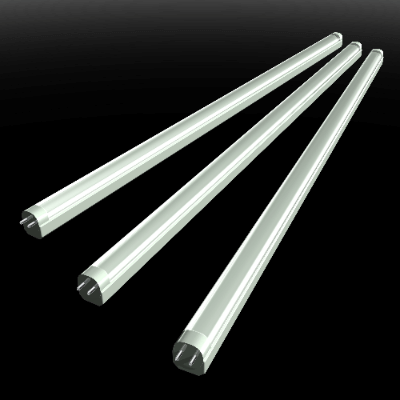What Is a Cold Cathode Fluorescent Lamp (CCFL)?
 Cold Cathode Fluorescent Lamp (CCFL) is a type of fluorescent lamp.
Cold Cathode Fluorescent Lamp (CCFL) is a type of fluorescent lamp.
Conventional fluorescent lamps are called Hot Cathode Fluorescent Lamps, and are abbreviated as HCFLs. CCFLs are unique in that they emit electrons without heating the electrodes, whereas HCFLs heat the electrodes and emit electrons from the emitter.
Since they do not have a filament, CCFLs have a longer life than HCFLs. In addition, CCFLs have the advantages of brighter illumination with less power consumption than HCFLs, in addition to higher color rendering and luminance.
Uses of Cold Cathode Fluorescent Lamp (CCFL)
CCFLs have been used as a light source for more than 40 years and have been widely used from home lighting to industrial applications. Specific applications are as follows:
- Backlight for monitors
- Reading light source for fax machines and scanners
- Decorative light source for amusement equipment
- Lighting for offices and commercial facilities
- Lighting for public facilities such as hospitals and nursing care facilities
They were mainly used in places where flashing lights are required. As a lighting source, CCFLs are suitable for places where people are stationed due to their high color rendering property.
Principle of Cold Cathode Fluorescent Lamp (CCFL)
CCFLs and HCFLs are both fluorescent lamps, but CCFLs are unique in that they do not heat the filament, while HCFLs heat the filament by applying a high voltage to it. When the filament reaches a certain temperature, electrons are emitted, which strike mercury vapor and emit ultraviolet light.
CCFLs are different in that they do not have a filament, but instead use a metal cup. The metal cup directly emits electrons when a high voltage is applied. Then, as in HCFLs, ultraviolet rays are converted to visible light by fluorescent paint.
The electrons are very small, with a radius of approximately 0.282 x 10-5 nm. When air is sealed inside the glass tube, inert gases such as Argon (Ag) or Neon (Ne) are sealed because the probability of collision with mercury vapor is low.
Other Information on Cold Cathode Fluorescent Lamp (CCFL)
1. Life of Cold Cathode Fluorescent Lamp (CCFL)
CCFLs have a life of about 40,000 hours. They have a shorter life than HCFLs because the filament deteriorates and the inside of the tube heats up. The life of LED lighting is about 40,000 hours, which is almost the same as CCFL.
2. Power Consumption of Cold Cathode Fluorescent Lamp (CCFL)
A CCFL is an energy-saving device with lower power consumption than a HCFL. They consume about 24W.
This is because CCFLs differ from HCFLs in that they do not heat the filament, thus eliminating the heat loss caused by the filament. On the other hand, when LED lighting provides the same illuminance as the above-mentioned straight fluorescent lamps, the power consumption is 22W.
In terms of power consumption, LED lighting is superior to CCFL.
Cold Cathode Fluorescent Lamp (CCFL) Regulations
In 2006, the RoHS (Rose) Directive came into effect in Europe, which stands for “Restriction of the use of certain Hazardous Substances in electrical and electronic equipment.
In summary, the directive prohibits the sale in Europe of products that contain more than a specified amount of restricted substances. Currently, 10 substances are subject to this regulation, including mercury. The regulated value of mercury is 1,000ppm or less.
CCFL and HCFL lamps always contain mercury in the glass tube. Most CCFL lamps sold contain less than the specified value of lead in compliance with the RoHS Directive.
However, CCFLs have now shifted from the mainstream of lighting to LEDs due to the image of containing mercury and from the viewpoint of product power consumption.